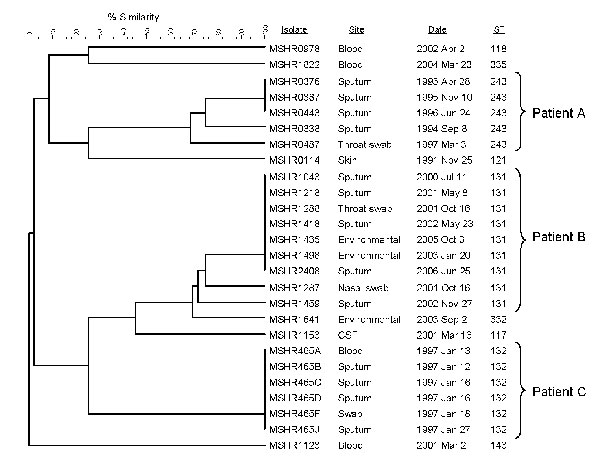Volume 15, Number 2—February 2009
Research
Identification of Melioidosis Outbreak by Multilocus Variable Number Tandem Repeat Analysis
Figure 3

Figure 3. Dendrogram showing 4-locus multilocus variable number tandem repeat analysis profiles for isolates from 3 patients with melioidosis, with isolate number and multilocus sequence typing sequence type (ST) listed (see text for details). Six isolates used to calibrate the dendrogram are indicated by asterisks in Figure 1 and listed in Table 2. CSF, cerebrospinal fluid.
Page created: December 08, 2010
Page updated: December 08, 2010
Page reviewed: December 08, 2010
The conclusions, findings, and opinions expressed by authors contributing to this journal do not necessarily reflect the official position of the U.S. Department of Health and Human Services, the Public Health Service, the Centers for Disease Control and Prevention, or the authors' affiliated institutions. Use of trade names is for identification only and does not imply endorsement by any of the groups named above.